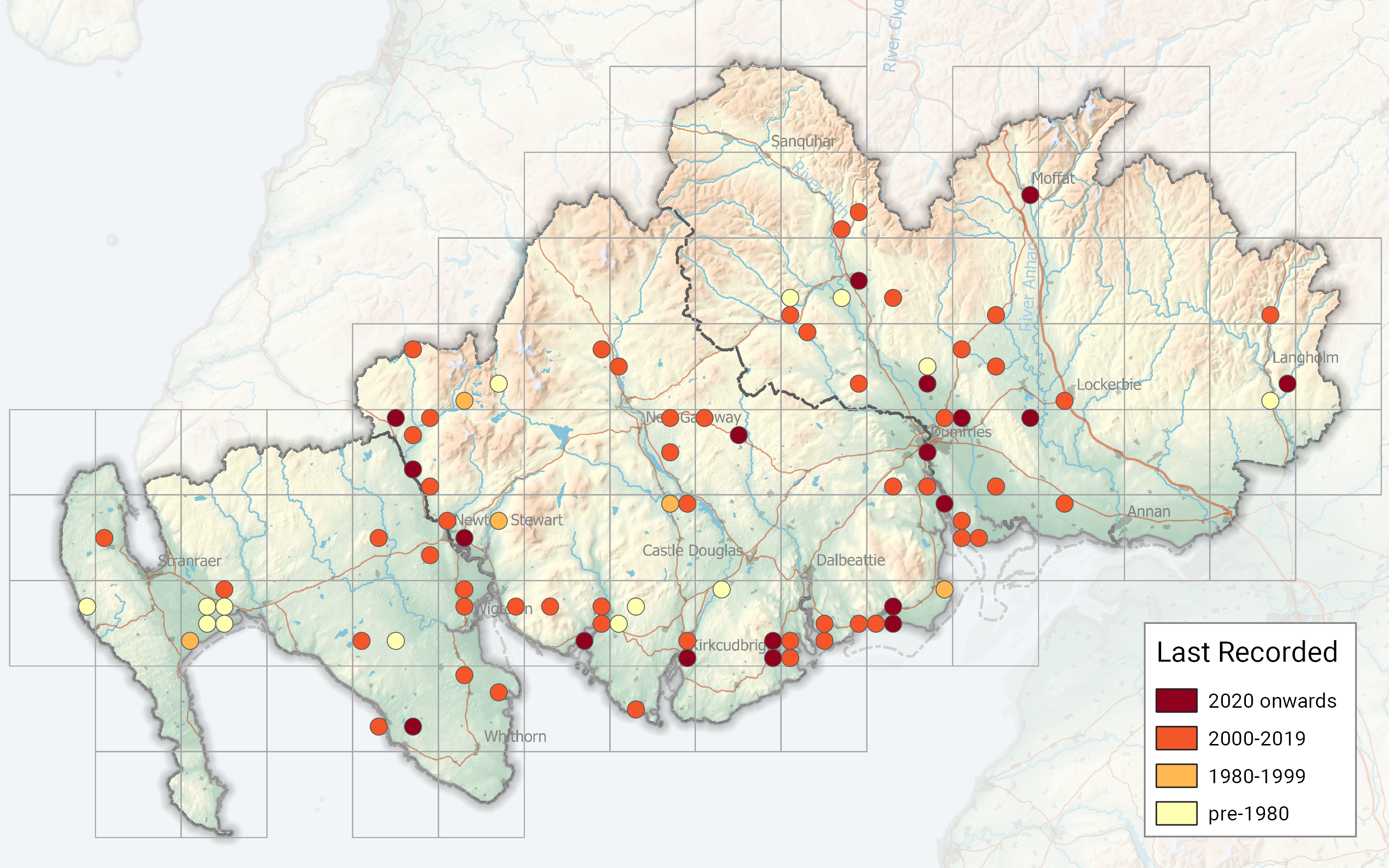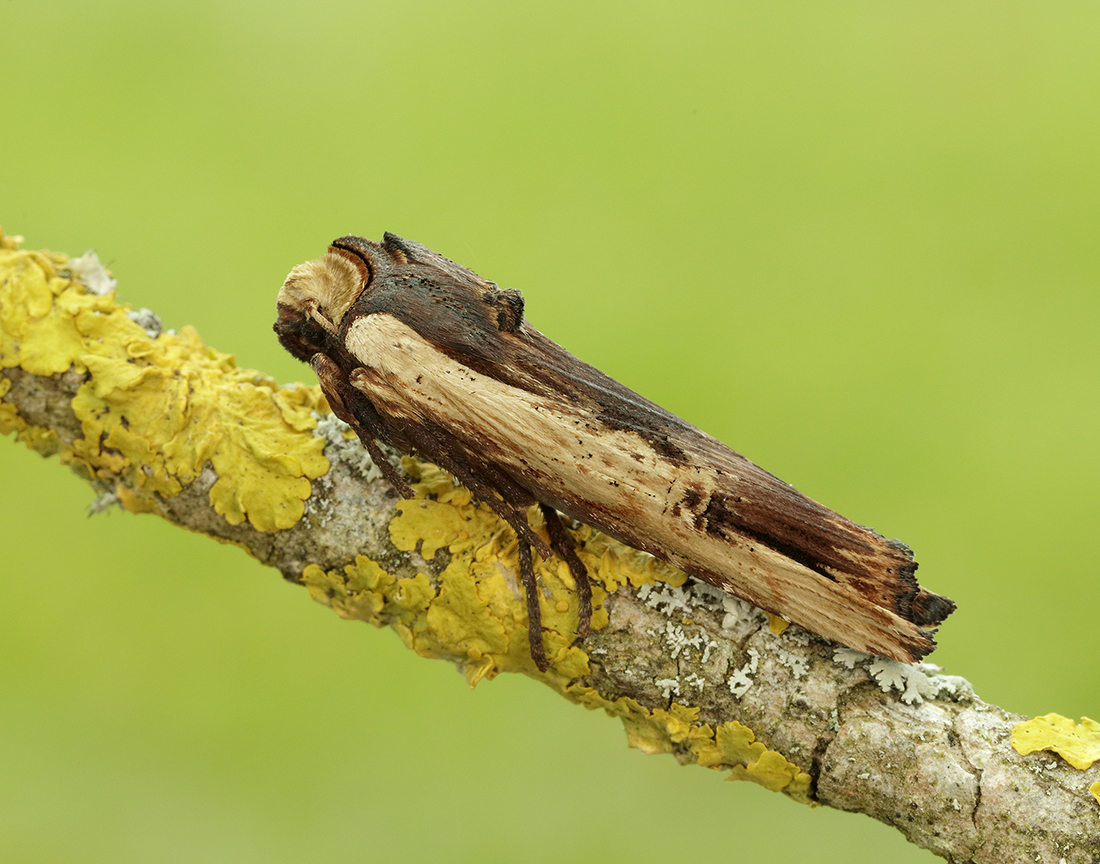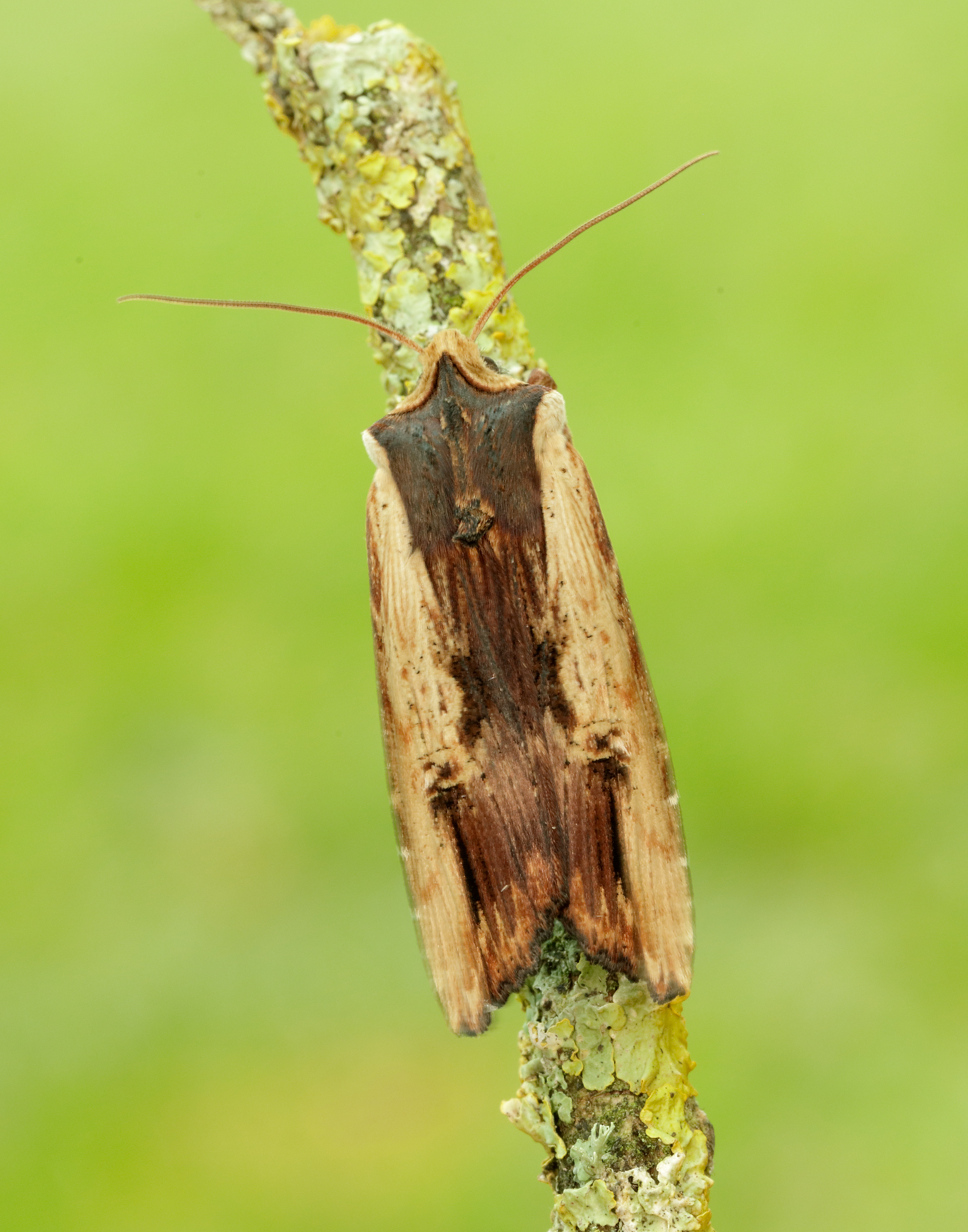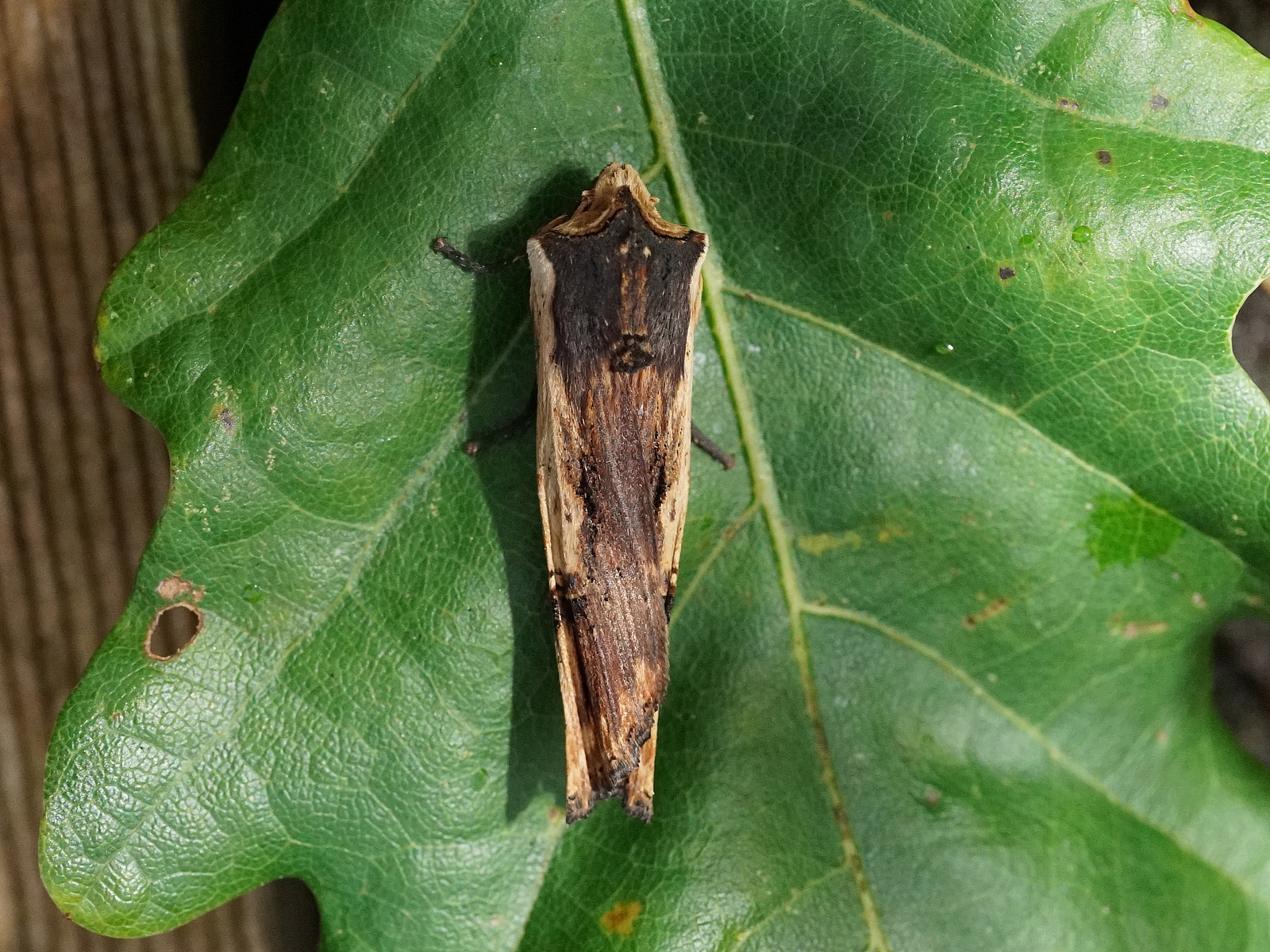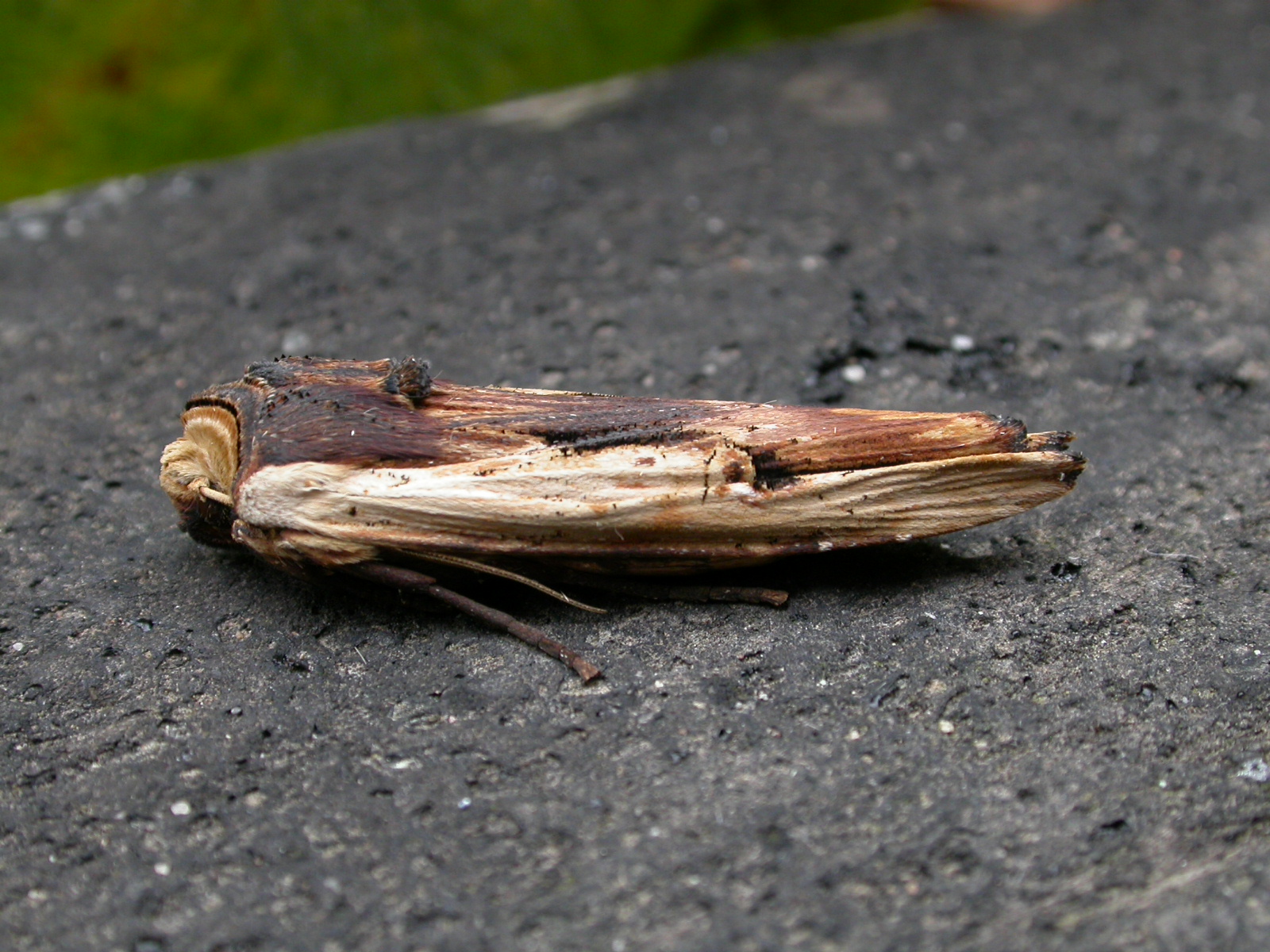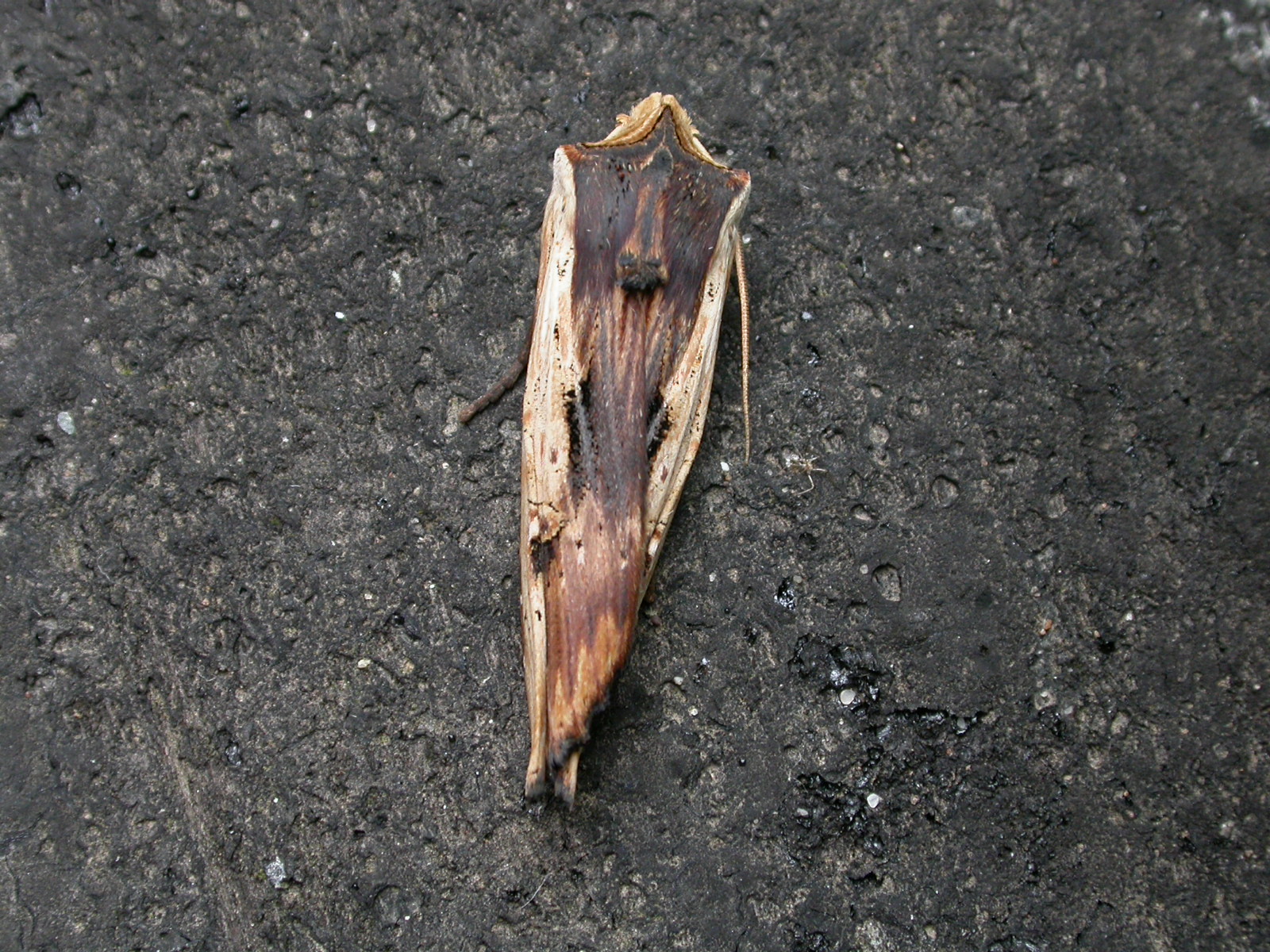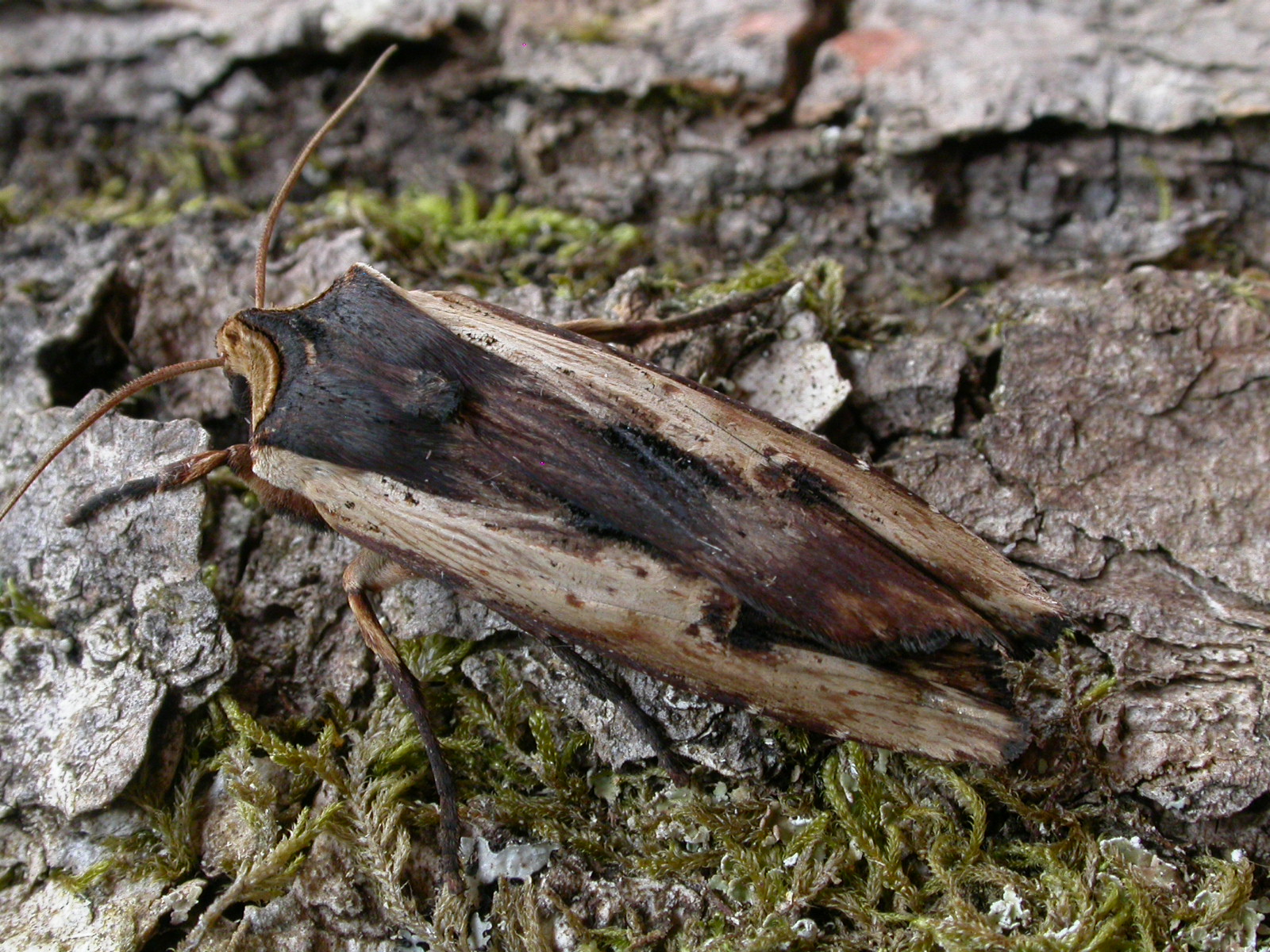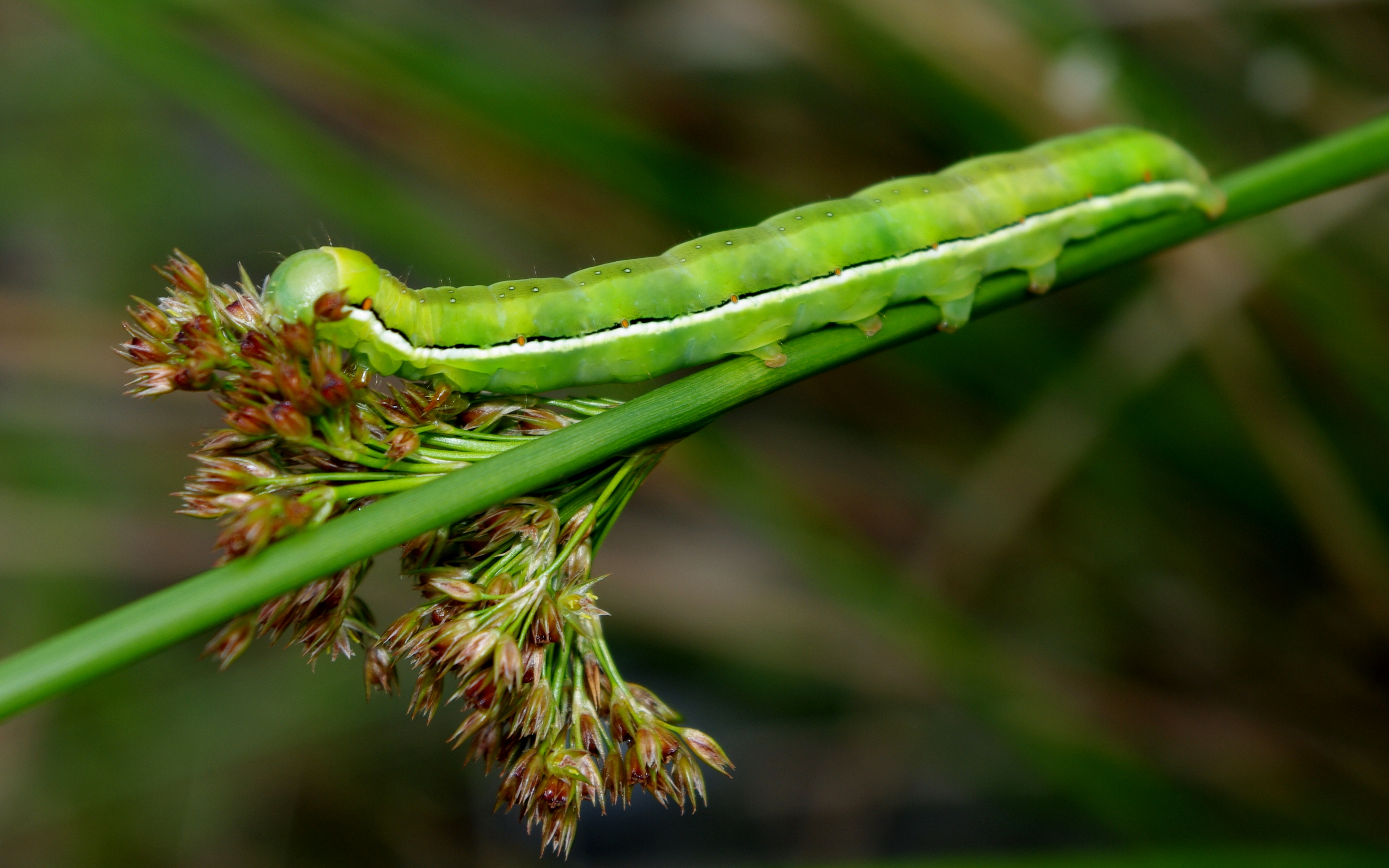Identification
The broad straw-coloured band running parallel to the costa, with the rest of the wing coloured blackish-brown with a hint of red is diagnostic.
Recording Method.
Attracted to light, also comes to sugar and flowers.
Life cycle
One generation in the autumn, reappearing in spring. Overwinters as an adult, in a sheltered position. Larvae are present May to July, feeding in the open by day and night, with pupation taking place underground in a cocoon.
Larval foodplants
Bog-myrtle, heathers, sedges, Soft-rush, Compact Rush and Yellow Iris.
Habitat
Boggy heathland, moorland, damp woodland, marshes and upland pasture.
History
Gordon (1913) had found it occasionally at sugar, but stated it was commoner at ivy blossom at Dounan, Corsemalzie in October, 1897.
Archibald Russell (1944) listed it as occurring near Gatehouse of Fleet (VC73) during the years 1942-43. Sir Arthur Duncan (1909-84) during his lifetime had found it at Closeburn and Tynron. Cunningham (1950) in the Transactions stated that he counted 22 on the 7th October 1949 at sugar in the Mabie Forest (VC73) and four the following year. He had also seen the Red Sword-grass in spring after hibernation. Pelham-Clinton had found it at Glenluce in the late 1950s.
During 1973-74 there were a fine series of records from Irvine House Lodge at Auchenrivock (VC72). There were just six records from the Rothamsted stations and those were at Bridge of Dee, Gatehouse of Fleet and Waterside Mains. There was one record in the 1980s and it was trapped on the Hensol Estate.
From 1992 to 2010 the regular trapped sites at Kirkton, Cally Woods, Kirriereoch and Carsfad at Dalry provided sixty of the 102 records in that period, with the rest from scattered sites across the region.

